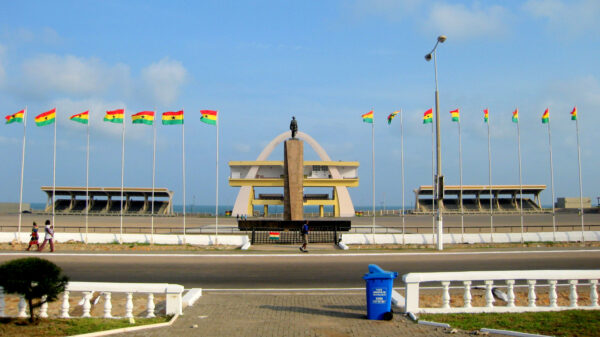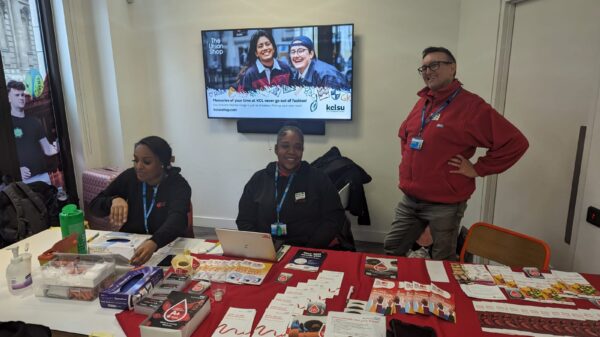Roar writer Sara Khash on the adoption of the rainbow as a symbol of NHS solidarity during the COVID-19 pandemic – and why that might not be such a good thing.
April 2020 came to an end with a double rainbow beaming over the United Kingdom. The image mirrored the drawings and paintings of children across the world. “Carry on, NHS Heroesâ€, the colourful arcs reminded the countless healthcare workers on the frontlines.
But who is all this really for? Are these drawings plastered on windows and Instagram feeds reminders for those risking their lives that we are there for them. Or is it for us? Is it for those staying at home, wondering when we will be able to come out again; a symbol of unity in a period of dysfunction?
MINE, YOURS, AND OURS
There seems to be a consensus between healthcare workers that these rainbows are for society as a whole. Encouraged to bring light to a stressful situation, children drew arcs of colour which now cover the white walls of hospital corridors. Sneaking into the corners of news broadcasts and social media posts, children’s drawings have become the universal emblems of a worldwide phenomenon.

A drawing of a rainbow in support of the NHS.
A foundation doctor at Basingstoke Hospital, who wished to remain anonymous, has expressed how this symbol has created a sense of unity in his ward. “The hospital has adopted a rainbow lamp, and every now and then someone has to remind the other to replace the batteriesâ€. The symbol has become a literal beacon of light, inspiring healthcare workers in the front lines to carry on. Dr Olivia Halliday at Royal Surrey Hospital says that when she sees the rainbow, it represents “an end of despairâ€.
The rainbow has served as psychological support for the individual healthcare workers sacrificing their health for the greater good. My source at Basingstoke shared that, “sometimes you forget what you’re a part of. You see the rainbow, and you’re reminded, I’m one of them.†Halliday adds, “it makes me smile and think of better times ahead.†At the end of the day, NHS workers are doing their jobs, facing the same uncertainty we all are. Their duty is to care for those affected, to prevent the spread of COVID-19 and keep their loved ones safe – a role that inevitably has consequences for one’s mental state.
“It does not represent me – it represents the situation. It is for everyone.†Many would agree with the anonymous doctor’s words. The colours join together to represent the unity of all forces working as one to end this pandemic. “Despite being isolatedâ€, Dr Halliday believes that the rainbow creates a bridge “connect[ing] the people at home to those around them†– a gentle reminder that “we are all in this togetherâ€. The multiple definitions that the rainbow seems to have all represent the crisis we face. The world’s uncertainty is expressed through our reliance on a single symbol.
A SYMBOL ALREADY TAKEN?
Despite the positive connotations of the symbol’s use during the pandemic, its use has led to a shift in the LGBTQ+ community.

A Pride flag, flying the colours of the rainbow.
“For the last 42 years, the rainbow has always been our symbol†comments J, co-author of the LGBT United Instagram page and member of the LGBTQ+ community. “The NHS is aware of this; as they have previously made rainbow NHS badges to support LGBTQ+ pride. Now, with the Pride Flag being used as a ‘Thank You’ flag, our progress to raise awareness and fight for our community won’t be paraded this year either [sic]. Making it a real slap in the face.â€
J recognizes the NHS’s work and sacrifice. As a community, however, “Most of our members have agreed adding a single colour or making the smallest change to the symbol would have made all the differenceâ€. To J, and many others in the community, it is a step backwards: “It was a long way for us to get from the death penalty to where we are now, and this certainly won’t help.â€
Jack Sheppard, who has given a TEDx Talk on the importance of LGBTQ+ representation in media, concurs but argues that manipulation of the rainbow began long before the pandemic. “In the last few years the symbol has been heavily commodified – and in pride month we see the symbol making its way into branding, merchandise, and products as a means to sell things, without a true understanding or recognition of how important the symbol isâ€. Sheppard points out that part of the problem is that “it is such a colourful, emphatic and widely used symbol anyway – I mean, it’s a rainbow.
“The Pride flag still remains immensely important to the queer community, and its origins should not be forgotten.†Sheppard states that the problem stems from advertisements selling pride flags under the moniker of “Thank You NHS” flags. Sheppard concludes that “all of this imagery has immense meaning to millions of people, and so people have to be aware of the history of the symbol. The issue isn’t kids drawing rainbows to put in their windows, the problem is the erasure of LGBT history, and the repurposing of an already marginalized community’s one true symbolâ€.
DO WE CONTINUE?
I know many people sacrificing more than twelve hours every day to the pandemic, putting their lives at risk in the frontlines. I see their tears, I see their sweat, and it almost feels selfish to say they do not deserve this symbol. However, I do not think it is this symbol that defines their efforts, their sacrifices, their courage. The images of their bruised faces from tight face masks, nurses and doctors singing “Lean on Me†to each other, videos of children unable to hug their parents when they return from work – those are the things that remind me of how thankful we should all be.
It is easy to argue that the rainbow is just a symbol representing a community and that its use during the COVID-19 pandemic should be taken at face value – but I know this is not true. It is not the rainbow that represents this pandemic, but the children who draw them. It is their innocence that we should be reminded of; their hope for a better tomorrow.
















